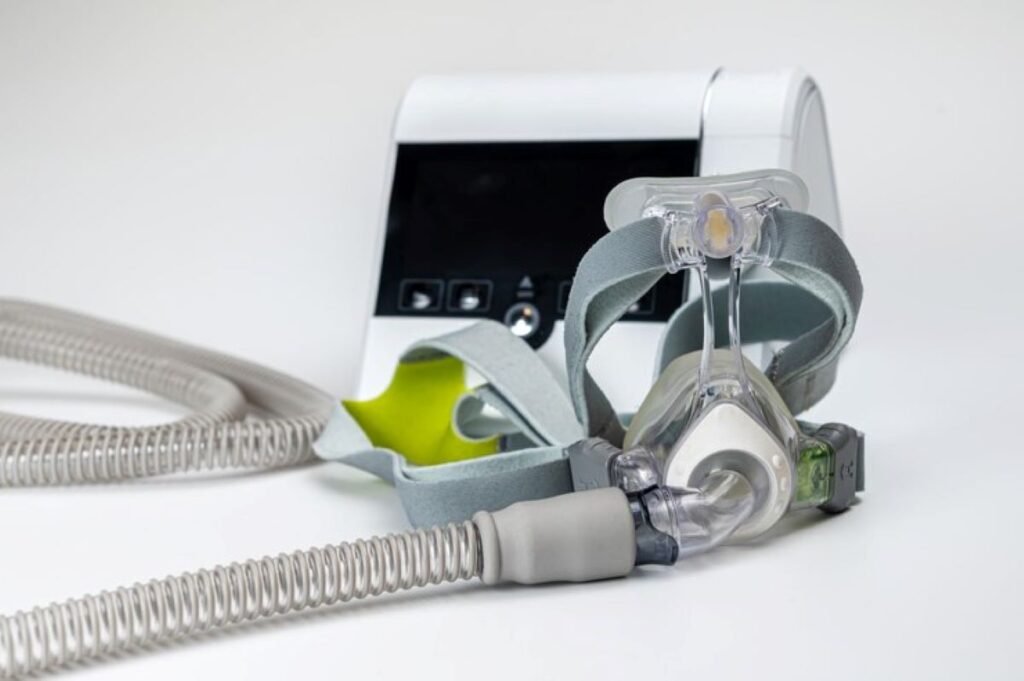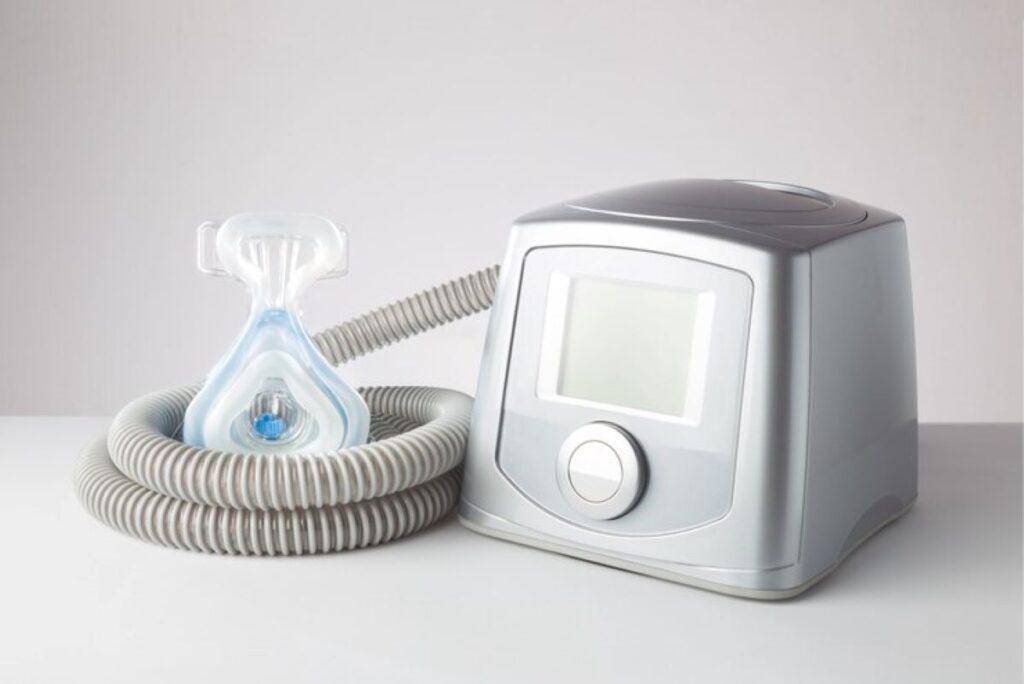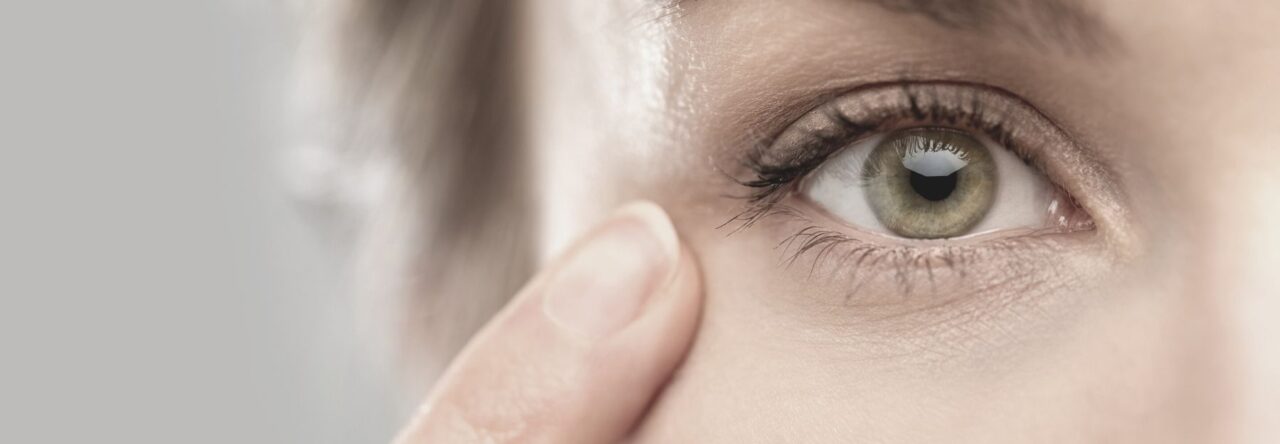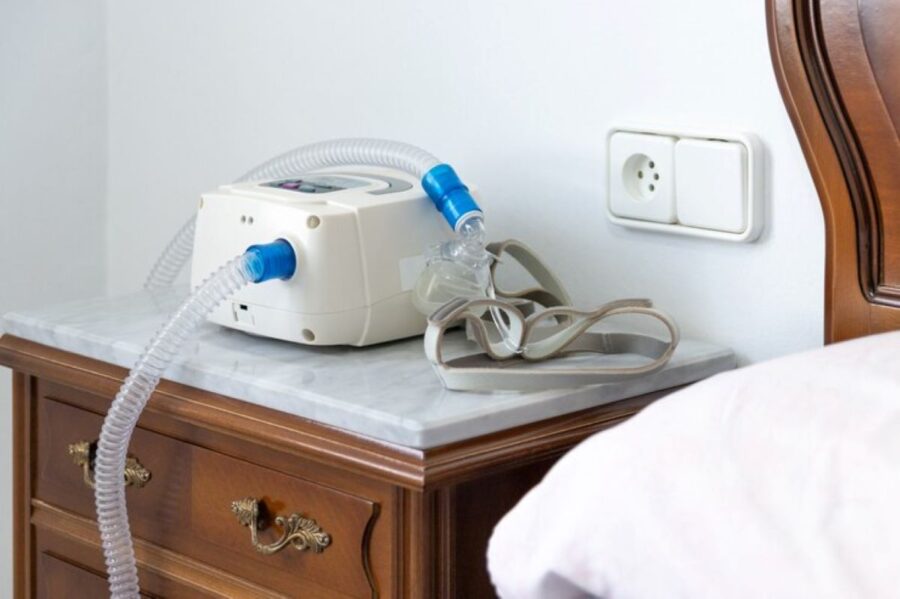What Are CPAP Machines and How Do They Help with Sleep Apnea?
CPAP (Continuous Positive Airway Pressure) machines are the most effective treatment for obstructive sleep apnea. They work by delivering a constant flow of pressurised air through a mask, keeping your airways open while you sleep. This prevents the throat muscles from collapsing and causing the breathing interruptions that are typical of sleep apnea.
Sleep apnea affects around 9% of Australian adults, but many cases go undiagnosed. This condition leads to multiple breathing pauses during the night, resulting in:
- Poor sleep quality and feeling tired during the day
- Higher chances of heart problems
- Difficulty thinking clearly and mood issues
- Lower overall quality of life
The Evolution of Sleep Medicine in Australia
The field of sleep medicine in Australia has changed a lot over the years. CPAP therapy is now more accessible than ever, thanks to specialised providers and homecare networks.
The Importance of Choosing the Right CPAP Machine
Choosing the right CPAP machines Australia is crucial for successful therapy and sticking to it in the long run. There are different models available in Australia, ranging from basic fixed-pressure machines to advanced auto-adjusting devices with smart connectivity features.
Your choice should be based on:
- Your specific sleep study results
- Your lifestyle needs
- Your comfort preferences
Understanding the different options for CPAP machines in Australia will help you make an informed decision that supports consistent and effective treatment for sleep apnea over the years.
What Are the Different Types of CPAP Machines Available in Australia?
The Australian market offers several types of CPAP machines, each designed to address different patient needs and sleep apnea severities. Understanding these variations helps you select the most suitable device for your specific therapy requirements.
Fixed Pressure CPAP Machines
Fixed pressure CPAP devices deliver a constant air pressure throughout your sleep cycle. These machines maintain the same prescribed pressure setting determined during your sleep study, typically ranging from 4 to 20 cmH2O. You’ll find these models particularly effective if your sleep apnea episodes occur consistently at the same pressure requirement. The straightforward operation makes them ideal for users who prefer simple, reliable technology without complex adjustments.
Auto-Adjusting Pressure (APAP) Machines
APAP machines represent advanced technology that automatically adjusts pressure levels based on your breathing patterns throughout the night. These devices monitor your airway resistance and modify pressure delivery from breath to breath, ensuring you receive optimal therapy whilst minimising discomfort. The intelligent algorithms detect when you need higher pressure during deeper sleep phases and reduce pressure during lighter sleep periods.
BiPAP Machines
BiPAP devices provide two distinct pressure levels – higher pressure during inhalation and lower pressure during exhalation. You’ll benefit from this technology if you have complex sleep apnea, central sleep apnea, or difficulty tolerating standard CPAP pressure. BiPAP machines prove particularly valuable for patients with respiratory conditions or those requiring higher pressure settings.
Portable CPAP Options
Portable CPAP models offer compact, travel-friendly solutions without compromising therapy effectiveness. These lightweight devices feature battery operation capabilities and streamlined designs, making them perfect for business travel or camping adventures.
What Features Should Users Consider When Choosing a CPAP Machine?
Selecting the right CPAP machine features requires careful consideration of comfort technologies, user interface design, and connectivity options. Modern devices incorporate sophisticated systems designed to enhance your therapy experience and improve treatment adherence.
Comfort Technologies
Comfort technologies represent the cornerstone of effective CPAP therapy. These features are designed to make your therapy more comfortable and enjoyable, ensuring you can sleep peacefully throughout the night. Here are some key comfort technologies to look for:
- SensAwake™ Technology: This intelligent feature detects when you’re awake and automatically reduces pressure, preventing the uncomfortable sensation of forced air during conscious moments. It helps you fall asleep more naturally and reduces therapy interruptions.
- Expiratory Pressure Relief: One of the most common complaints about CPAP therapy is difficulty exhaling against constant pressure. This technology slightly reduces pressure during exhalation, making breathing feel more natural and comfortable throughout the night.
- Humidification Systems: Dryness and irritation in the airways can be common issues with CPAP therapy. Look for machines that have humidification systems like ThermoSmart™, which maintain optimal moisture levels in your airways and prevent discomfort.
- AirSpiral™ Tubing: Condensation buildup in the tubing can lead to uncomfortable sensations during therapy. Machines with heated coils in their tubing, such as AirSpiral™, help prevent condensation buildup and maintain consistent temperature delivery to your mask.
User Interface Design
The user interface of your CPAP machine plays a significant role in how easy it is to use and navigate through its features. Consider these factors when evaluating different models:
- Large, clearly labelled buttons for easy navigation
- Simple menu structures that don’t require technical expertise
- Bright, readable displays visible in low-light conditions
Connectivity Options
In today’s digital age, having connectivity options on your CPAP machine can greatly enhance your therapy experience. Look for devices that offer:
- Bluetooth or Wi-Fi capabilities for seamless data transfer
- Dedicated apps or web platforms for comprehensive therapy tracking
- Integration with other health apps or devices for holistic monitoring
These digital tools allow you to monitor your progress, share data with healthcare providers, and receive personalised insights to optimise your treatment outcomes.

How Do Popular CPAP Brands Like Air Liquide Healthcare Stand Out in Australia?
Air Liquide Healthcare has established itself as Australia’s premier respiratory care provider since 1995, building a reputation that spans nearly three decades of dedicated service. This French-owned company brings global expertise to the Australian market, backed by an international presence serving 3.8 million patients across 75 countries with 66,400 employees worldwide.
The company’s homecare services network represents one of Australia’s most comprehensive respiratory care infrastructures. Tens of thousands of patients rely on Air Liquide Healthcare for their home oxygen and sleep apnoea treatment needs, creating a vast support system that extends across metropolitan and regional areas.
Nationwide Coverage and Service Excellence
Air Liquide Healthcare operates 152 diagnostic and therapy service locations throughout Australia, ensuring patients can access professional support regardless of their geographical location. This extensive network provides:
- Direct patient support and equipment maintenance
- Professional fitting and adjustment services
- Ongoing therapy monitoring and optimisation
- Emergency equipment replacement when needed
The company’s commitment to high-quality products and services extends beyond equipment provision. Their approach focuses on delivering comprehensive care solutions that support both patients and healthcare providers, ensuring optimal therapy outcomes through professional guidance and technical expertise.
This established infrastructure positions Air Liquide Healthcare as a trusted partner for Australians seeking reliable CPAP therapy solutions, combining international standards with local accessibility and support.
What Is the Typical Price Range for CPAP Machines in Australia?
CPAP machine prices Australia typically range from AUD 1,000 to AUD 2,000, depending on the specific model and features you select. Basic fixed-pressure units sit at the lower end of this spectrum, whilst advanced auto-adjusting models with premium features command higher prices.
Several cost factors influence these price variations:
- Technology level – Auto-adjusting pressure (APAP) machines cost more than fixed-pressure units
- Humidification systems – Built-in heated humidifiers add to the base price
- Data connectivity – Wireless monitoring and app integration features increase costs
- Included accessories – Comprehensive starter packages with masks, tubing, and filters affect pricing
- Brand reputation – Established manufacturers often charge premium rates for proven reliability
Many Australian suppliers now offer subscription options as an alternative to outright purchase. These programmes typically require credit checks and allow you to spread costs over 12-24 months. Subscription models often include:
- Regular replacement of consumables like filters and masks
- Technical support and maintenance services
- Upgrade options to newer models
You’ll find subscription payments generally range from AUD 50-100 monthly, making therapy more accessible without the substantial upfront investment. This cost comparison approach helps you budget effectively whilst ensuring consistent access to essential replacement parts throughout your treatment journey.
What Accessories Are Essential for Effective CPAP Therapy?
CPAP accessories Australia markets offer a comprehensive range of essential components that directly impact your therapy success. The right accessories transform your CPAP experience from uncomfortable to therapeutic, making consistent nightly use achievable.
Mask Types Selection Guide
Your mask choice determines therapy comfort and effectiveness. Nasal masks cover only your nose, ideal if you breathe primarily through your nose and prefer minimal facial contact. These masks work well for active sleepers who move frequently during the night.
Nasal pillow masks feature small cushions that seal directly into your nostrils, offering the least intrusive design. You’ll find these particularly beneficial if you wear glasses, have facial hair, or feel claustrophobic with larger masks.
Full face masks cover both your nose and mouth, essential if you breathe through your mouth during sleep or experience nasal congestion. These masks ensure continuous therapy regardless of your breathing pattern changes throughout the night.
Essential Maintenance Components
Replacement filters require regular attention for optimal machine performance. Standard filters need replacement every 2-4 weeks, whilst fine filters last 3-6 months. Clean filters prevent dust and allergens from entering your airways whilst protecting your machine’s internal components from damage.
Australian suppliers typically bundle essential accessories with new machines, though you’ll need ongoing replacement supplies. Many providers offer convenient subscription services for filters and mask cushions, ensuring you never run short of critical components.
How Should Users Properly Set Up and Use Their CPAP Machines?
Proper CPAP setup forms the foundation of successful sleep apnea therapy. Following this comprehensive CPAP setup guide ensures you receive maximum therapeutic benefits from your investment.
Initial Machine Assembly
Begin by placing your CPAP machine on a stable, flat surface near your bed. Connect the air tubing firmly to the machine’s outlet port, ensuring you hear a distinct click indicating a secure connection. Attach the opposite end of the tubing to your chosen mask, checking that all connections remain tight to prevent air leaks.
Humidification Configuration
If your machine includes humidification features, fill the water chamber with distilled water up to the maximum fill line. Never use tap water, as minerals can damage internal components and create bacterial growth. Insert the chamber into the machine until it clicks into place securely.
Achieving Optimal Mask Fit
Position your mask according to the manufacturer’s guidelines, adjusting headgear straps gradually. Start with loose straps and tighten incrementally until you achieve a comfortable seal without over-tightening. The mask should sit snugly against your face without causing pressure marks or discomfort.
Maintaining Effective Airflow
Keep your sleeping area clear of obstructions that might interfere with the air tubing. Position the tubing to prevent kinking or twisting during sleep movements. Test your setup by turning on the machine and breathing normally through the mask before sleep, ensuring consistent airflow delivery throughout your machine assembly process.
Why Is Professional Consultation Important Before Using a CPAP Machine?
Consulting a sleep specialist is the crucial first step in your journey with CPAP therapy. You can’t just buy a machine and expect it to work perfectly without a proper medical evaluation.
Understanding Sleep Apnea Diagnosis in Australia
In Australia, diagnosing sleep apnea involves a thorough assessment at accredited sleep clinics. Here, specialists conduct overnight sleep studies to determine how severe your condition is and figure out the best way to treat it.
The Role of Your Doctor in CPAP Therapy
Your doctor will look at specific breathing patterns, oxygen levels, and how often your sleep gets disrupted. This information helps them prescribe the exact pressure settings your machine needs. By taking this personalised approach, you can expect to experience the benefits of therapy instead of discomfort caused by incorrect pressure levels.
Why Generic Settings Aren’t Enough
Generic settings simply don’t take into account individual differences in anatomy or varying degrees of airway blockage. Each person is unique, and so are their treatment needs.
Continuous Support from Sleep Specialists
Professional monitoring doesn’t stop after the initial setup. Sleep specialists keep an eye on your therapy data using the connectivity features of modern CPAP machines. This allows them to:
- Adjust pressure settings based on how you use the machine
- Identify any issues with mask leakage that might affect treatment effectiveness
- Monitor how often you use the machine and any improvements in your sleep quality
- Spot potential complications early on
Regular follow-up appointments give specialists the opportunity to make adjustments to your therapy as your condition changes or improves.

Comprehensive Care Across Australia
Air Liquide Healthcare has a wide network of 152 diagnostic and therapy locations throughout Australia. This means you’ll have access to ongoing support from qualified respiratory therapists who work closely with your sleep specialist to ensure the best possible treatment outcomes.
The Benefits of Professional Guidance
You’ll find that having professional guidance greatly increases the chances of sticking to your therapy. Patients who receive proper supervision tend to have better sleep quality and less daytime fatigue compared to those who try managing their condition on their own.
How Can You Make an Informed Decision When Choosing a CPAP Machine in Australia?
Choosing CPAP machines in Australia involves considering several factors beyond just the price. It’s important to prioritise comfort features such as expiratory pressure relief and advanced humidification systems, as these directly affect your ability to stick to the therapy and the quality of your sleep.
While cost is important, keep in mind that the most expensive machine isn’t always the best choice for your specific needs. When comparing CPAP Machines in Australia: Comparing Features and Prices, pay attention to:
- Comfort technologies that suit your sleep patterns
- User-friendly interfaces for everyday use
- Connectivity options for monitoring your progress
Professional guidance is still extremely valuable during your decision-making process. Sleep specialists know how different features target specific sleep apnea patterns and can suggest machines that enhance your treatment results. By combining expert advice with your personal comfort preferences and budget considerations, you’ll achieve better long-term outcomes.


